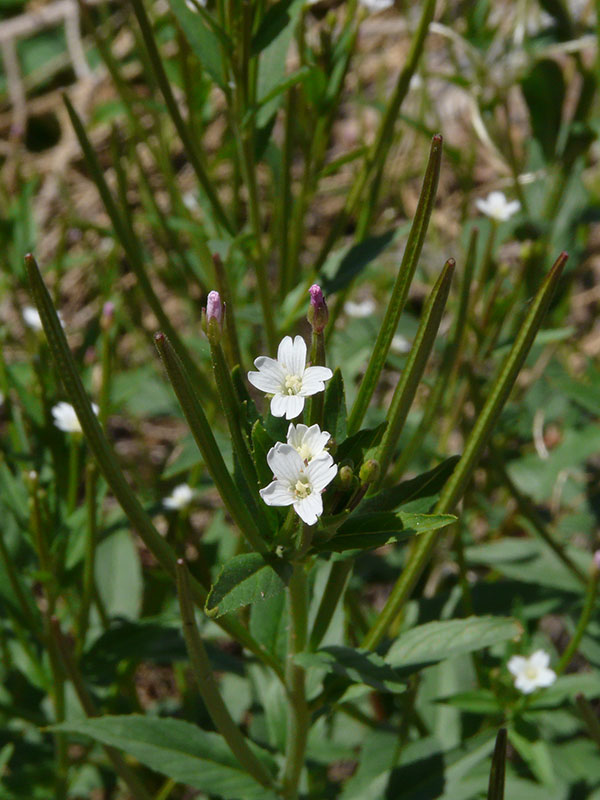Epilobium ciliatum / common willow-weed
- small flowers… pink to purple to white
- four, very deeply notched petals
- narrow, very long fruit; downy seeds
Also known as: fringed- , American-, northern-, or slender willow-herb
Here’s a twist for you – common willow-herb is native to the US and to Idaho, but is a weed in nurseries and a serious pest elsewhere in the world! So not all the pests come this way. In The Valley, it is widespread. Although it is said to be happiest on the edges of wetlands, it is common on roadsides, paths and trails in the mountains (possibly spread by people and horses), even rocky areas high up. Although it is not dominant anywhere, it is seldom one can take a walk or hike without seeing it (once one’s “search image” is established). It is very hard to photograph with a cellphone against any background.
Willow-weed is a perennial with both sexual (seed) and vegetative (rhizomes) reproduction. In the right conditions, it can be quite tall… ca. 5 feet. The leaves are long, thin and pointy (lanceolate), and often sessile.
The ¼ – ½ inch flowers are at the tops of skinny stalks a couple inches long; these later become the fruit, meaning that they are actually the ovaries… and that although the petal spread is small, the whole flower isn’t really. So that’s weird and a bit confusing. When the fruits dry, they split (but don’t explode, like geranium), releasing several tiny seeds with tufts of fine hairs.
| Family | |
|---|---|
| Color | |
| Blossom size | |
| Inflorescence size | |
| Inflorescence type | |
| When? | |
| Where? |



